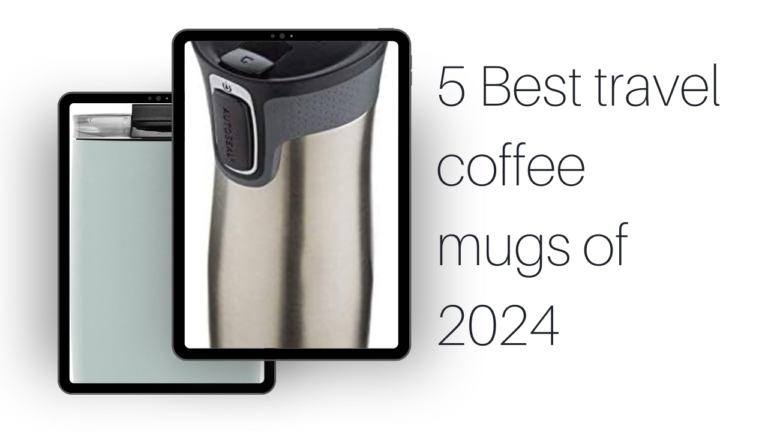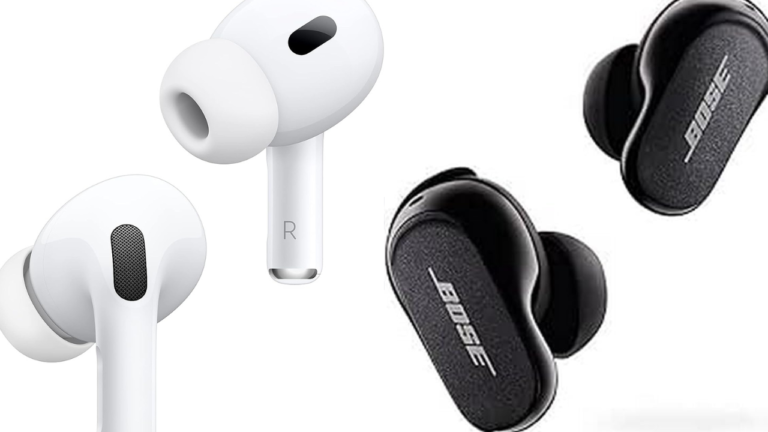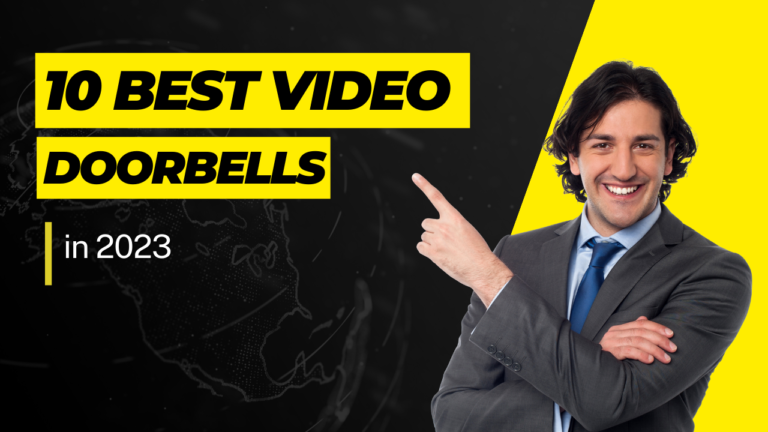Exclusive Report: Sky Made Simple — The Best Drones for Beginners in 2025
The entry-level drone market is taking off fast. With better cameras, smarter safety, and one-touch controls, flying is no longer just for professionals—it’s for everyone.

A few years back, drones were seen as complex machines—built for professionals with big budgets and steady hands. But that story has shifted. Today, the market for the best drones for beginners is booming, with newcomers of all ages eager to take their first flight. Retail reports and tech reviews show entry-level models selling faster than ever, thanks to lower prices and smarter safety features.
Industry experts point to built-in stabilization, one-touch takeoff, and improved cameras as game-changers, making drones less intimidating and more enjoyable. For first-time fliers, the goal is no longer just learning how to steer—it’s capturing clear videos, practicing safe landings, and joining a trend that’s gone mainstream. This report highlights the beginner-friendly drones making news right now, along with practical guidance on what to expect before you take off.
Editor’s Menu — Best 7 Beginner Drones
1. DJI Mini 4K: (Why It’s Earning Headlines as a Beginner’s Drone)
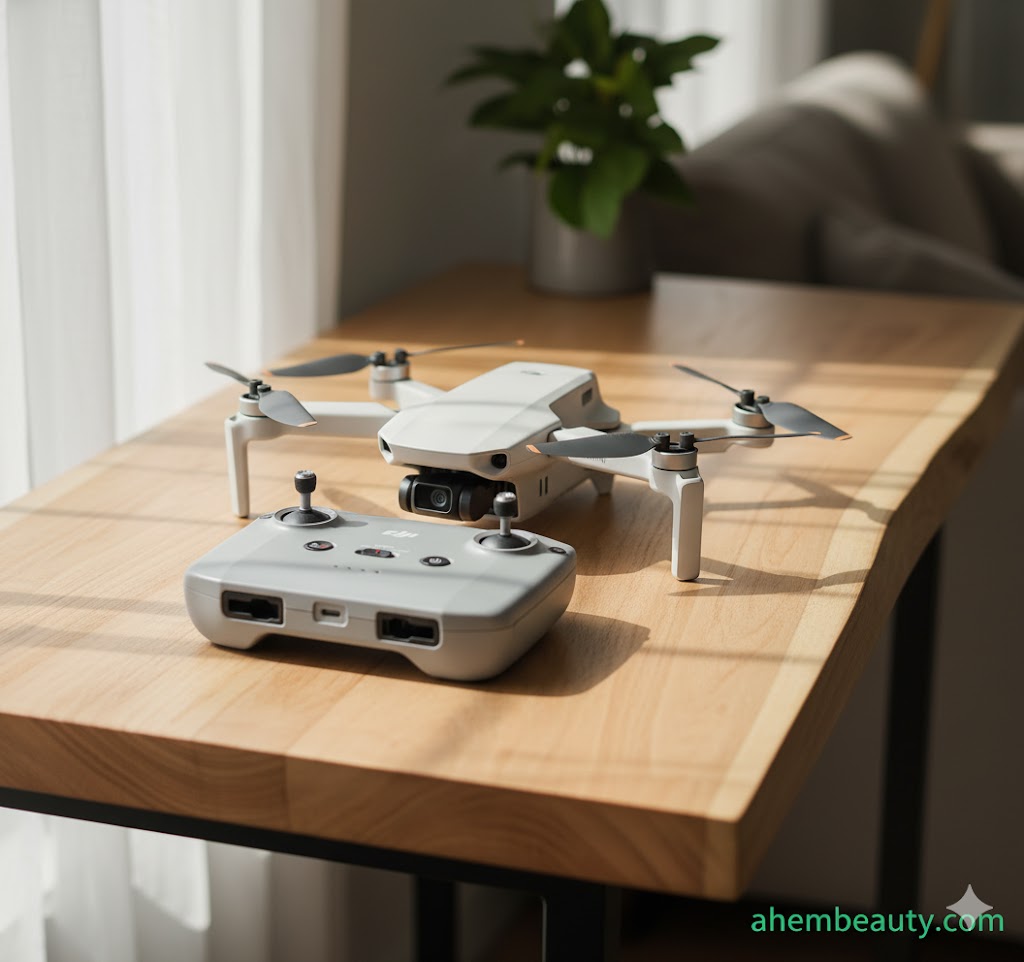
Market pulse — Sub-249 g designs reduce U.S. hobby registration friction, 4K + 3-axis gimbals flatten the learning curve, and Fly More bundles extend practice time. The Mini 4K nails this trio—one reason it’s a frequent first pick.
Not long ago, drones were seen mainly as professional gear — expensive, complex, and often out of reach for beginners. But the market is changing fast. Retailers are reporting a steady rise in first-time drone buyers, and models like the DJI Mini 4K are at the center of this shift. Combining advanced flight technology with safety features designed for novices, this compact quadcopter is being recognized as one of the best drones for beginners in 2025.
One of the first questions new pilots ask is: Do I need to register my drone? With the DJI Mini 4K, the answer is no — at least for recreational flying in the U.S. Weighing under 249 g, it falls below the FAA’s registration threshold. For hobbyists, that means less red tape and more flying. Still, experts remind buyers to check local rules, as laws differ worldwide. Tech reviewers say this weight category is one of the Mini 4K’s biggest selling points, making it especially attractive to first-time fliers.
Camera quality is often where budget drones cut corners. The Mini 4K doesn’t. Its 4K Ultra HD sensor, paired with a 3-axis mechanical gimbal, captures footage that looks cinematic straight out of the box. From sunrise panoramas to low-light street scenes, the stabilization ensures smooth, professional-grade shots. Buyers report that even without prior flying experience, they were able to capture social-media-ready clips on their very first day.
Many entry-level drones struggle when the wind picks up. The DJI Mini 4K, though, delivers steady performance even when flying in winds up to 38 kph (Level 5). Its brushless motors provide consistent lift even at altitudes of 4,000 meters. “It stayed impressively stable during breezy conditions,” one reviewer noted, adding that it performed better than other entry-level drones in the same price range.
Battery life is another factor that can make or break a beginner’s experience. DJI gives buyers options here: a standard 31-minute battery or Fly More combos with 62- or 93-minute total flight time. That’s critical for practice — fewer interruptions, more chances to build confidence. Buyers frequently mention that the extended battery bundles reduce “battery anxiety,” giving them more freedom to practice without constant recharging.
Ease of use is where the Mini 4K shines. One-tap takeoff and landing, GPS-based Return to Home, and auto-hover reduce the risks of early crashes. The DJI Fly app also includes tutorials, guiding new users through their first flights. Since the app has been removed from Google Play, DJI now provides direct downloads from its official website — something reviewers say ensures updates and compatibility stay reliable.
Even beginners want footage that looks polished. With QuickShots like Dronie, Rocket, and Circle, the Mini 4K automates cinematic maneuvers. A few taps produce professional-looking clips that would take manual practice to master. “For a first-time pilot, it feels like having a director built into the drone,” one tech reviewer observed.
| Pros | Cons |
|---|---|
| No FAA registration needed (under 249 g) | DJI Fly app no longer available on Google Play (must download via DJI site) |
| 4K Ultra HD camera with 3-axis gimbal for smooth footage | Limited obstacle avoidance compared to higher-end drones |
| Performs reliably in winds up to 38 kph (Level 5) | Camera sensor smaller than premium professional models |
| Up to 31 minutes flight per battery; bundles extend up to 93 mins | |
| Beginner-friendly controls: one-tap takeoff/landing, GPS RTH | |
| QuickShots for easy cinematic videos |
In news reports, customer reviews, and expert testing, the DJI Mini 4K consistently emerges as a top pick for new pilots. Its combination of regulation-friendly weight, strong wind resistance, extended battery options, and advanced camera makes it more than just a starter drone — it’s a gateway into serious aerial photography. For anyone ready to take their first flight, this drone doesn’t just lower the barrier to entry — it redefines it.
2. DJI Mini 3 Fly More Combo: (A Step Up for Beginner Pilots)
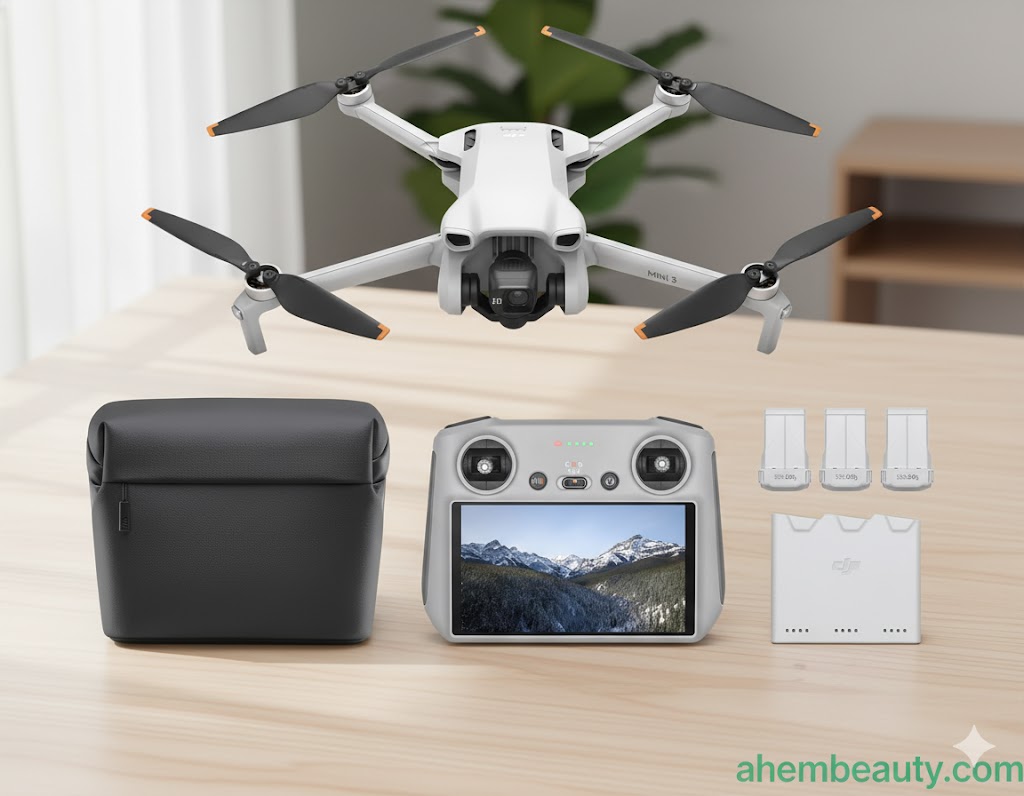
Market pulse — Beginners who outgrow “first flights” look for longer air time, vertical video, and steadier control. Mini 3’s Fly More bundle answers with extended batteries, true vertical shooting, and refined stabilization—ideal for skill-building without leaving the sub-249 g class.
After exploring the DJI Mini 4K, many newcomers quickly ask: what’s the next level up if I want longer flight times and more advanced shooting options? That’s where the DJI Mini 3 Fly More Combo enters the conversation. Seen in both consumer reports and industry roundups, this model has been described as a good drone for beginners who are ready to stretch their skills further, while still keeping things safe and straightforward.
Like the Mini 4K, the DJI Mini 3 stays under the 249 g threshold, meaning recreational pilots in the U.S. don’t need FAA registration. That’s a relief for learners who want straightforward flying without legal headaches. Reviewers say its foldable design continues to be one of the best features, allowing travelers to carry it without hassle. In fact, buyers report that it feels “pocketable yet powerful” — a strong combination for weekend flyers or vacation adventurers.
One of the biggest differences here is the extended flight time. The Fly More Combo comes with multiple batteries, pushing total air time up to 93 minutes. For new pilots, that extra practice window is invaluable. Instead of worrying about a quick landing, beginners can focus on learning controls, experimenting with features, and capturing footage at their own pace.
Wind resistance also holds up. The Mini 3 manages to stay steady in winds up to 38 kph (Level 5), similar to the Mini 4K, but pilots say the performance feels smoother and more confident thanks to refined stabilization software. This gives new users confidence that their drone won’t drift dangerously in moderate breezes — a frequent concern with cheaper models.
While the Mini 4K offered crisp footage, the Mini 3 goes further with 4K HDR video recording and true vertical shooting mode — a standout for social media creators. Tech reviewers say the vertical mode is “a game-changer for Instagram and TikTok,” as it avoids awkward cropping and produces ready-to-share footage. The 12 MP stills may not rival professional drones, but the detail, dynamic range, and stabilization make it one of the top rated drones for beginners who want to learn both flying and content creation.
Beginners will find familiar features like one-tap takeoff and landing, GPS-based Return to Home, and auto-hover. The DJI Fly app also integrates tutorials, making the learning curve smooth. Reviewers highlight that while obstacle avoidance is basic compared to premium models, the Mini 3 keeps things simple yet safe — a reassuring balance for first-time fliers.
DJI’s QuickShots return here with Dronie, Circle, Helix, and Rocket — pre-programmed flight paths that automatically create cinematic clips. What stands out is how accessible these features feel. As one buyer explained: “I never thought I could make professional-looking drone shots on my first day, but QuickShots made it happen.” For learners, this balance of automation and control inspires creativity without overwhelming complexity.
| Pros | Cons |
|---|---|
| Under 249 g (no FAA registration needed for recreational use) | No advanced obstacle avoidance sensors |
| Fly More Combo offers up to 93 minutes of flight time | Camera sensor smaller than pro models |
| 4K HDR video with true vertical shooting for social media | Higher price than basic entry-level drones |
| Holds steady even in winds up to 38 kph (Level 5) | |
| Beginner-friendly controls with GPS RTH and one-tap landing | |
| QuickShots simplify cinematic filming |
The DJI Mini 3 Fly More Combo builds on everything that made the Mini 4K beginner-friendly and adds more room to grow. With its extended battery life, vertical video shooting, and reliable performance in real-world flying, it strikes a balance between accessibility and ambition. For those who want a good drone for beginners but also one that can scale as skills improve, the Mini 3 Fly More Combo is a natural next step. It proves that entry-level no longer means compromise — it means opportunity, one smooth flight at a time.
3. DJI Mavic Air: (Portable Power With Advanced Photography)

Market pulse — Step-up shoppers want faster speed, more sensors, and higher-bitrate 4K without losing portability. Mavic Air delivers with 4K/100 Mbps, tri-directional sensing, Sport-mode thrills, and a foldable premium build.
When the DJI Mavic Air first entered the market, it was positioned as the bridge between beginner drones and professional models. Years later, it still holds strong appeal, especially for newcomers eager to capture cinematic footage without losing portability. Industry reviewers often describe it as a good starter drone for those who want to move beyond the basics without jumping straight into professional rigs.
Design and Build: Foldable but Solid
Weighing around 430 g, the Mavic Air is slightly heavier than DJI’s Mini series, but that extra weight adds stability and a more durable feel. Its foldable arms and compact body make it extremely travel-friendly, sliding easily into a small backpack. Buyers frequently note how the Mavic Air feels more premium in hand compared to smaller beginner drones, with a sturdier construction that inspires confidence.
The Mavic Air can reach speeds of up to 68.4 kph (in Sport Mode), offering a thrill that beginner-friendly models often lack. Despite the added speed, reviewers highlight its responsive controls and stability, even in moderate winds. GPS and GLONASS dual satellite positioning ensure accurate hovering, while obstacle avoidance sensors on the front, rear, and bottom provide a safety net that many new pilots appreciate. These features make it a step up for those who want faster, more adventurous flying while still keeping crashes at bay.
One of the strongest highlights of the Mavic Air is its camera setup. Equipped with a 1/2.3-inch CMOS sensor, it captures 12 MP stills and records 4K video at 30fps with a maximum bitrate of 100 Mbps. The 3-axis gimbal stabilizes footage for cinematic quality, while HDR support ensures better color balance in bright or mixed-light conditions. For beginners who value photography, this drone transforms casual shots into professional-looking media. Many owners report that it was the first drone that made their travel vlogs or family footage look “film-ready.”
DJI’s popular QuickShots are available here too — including Dronie, Rocket, Circle, and Helix — which automatically choreograph cinematic shots. SmartCapture mode lets pilots use hand gestures to launch, land, and record, making it especially fun at social gatherings. Tech reviewers say these intelligent modes lower the learning curve while still producing dramatic results, making the Mavic Air a practical creative tool for new pilots.
The Mavic Air provides up to 21 minutes of flight time on a single charge, less than the Mini 3 but balanced by its stronger performance and imaging features. Its range extends up to 10 km with 720p real-time video transmission, giving beginners plenty of space to practice. While some buyers mention wanting longer flights, most agree the tradeoff is acceptable given its imaging power.
| Pros | Cons |
|---|---|
| Compact and foldable design for travel | Shorter flight time (21 minutes) compared to newer Minis |
| 4K video with 3-axis gimbal and HDR support | Heavier than sub-249 g drones (requires registration in some regions) |
| Obstacle avoidance sensors in multiple directions | Pricier than entry-level beginner models |
| Speeds up to 68.4 kph with stable control | |
| Intelligent QuickShots and gesture control | |
| 10 km transmission range |
The DJI Mavic Air finds the perfect middle ground between lightweight beginner drones and full-scale professional models. It offers portability, obstacle avoidance, and strong imaging capabilities in a design that’s both fun and confidence-building for first-time users. For those who want more than a toy-like experience, the Mavic Air delivers both adventure and artistry. It remains one of the best introductions to serious aerial photography, making it a good starter drone that naturally ranks among the best drones for photography in its class.
4. RADCLO Mini Drone with Camera: (Affordable Entry into Aerial Videography)
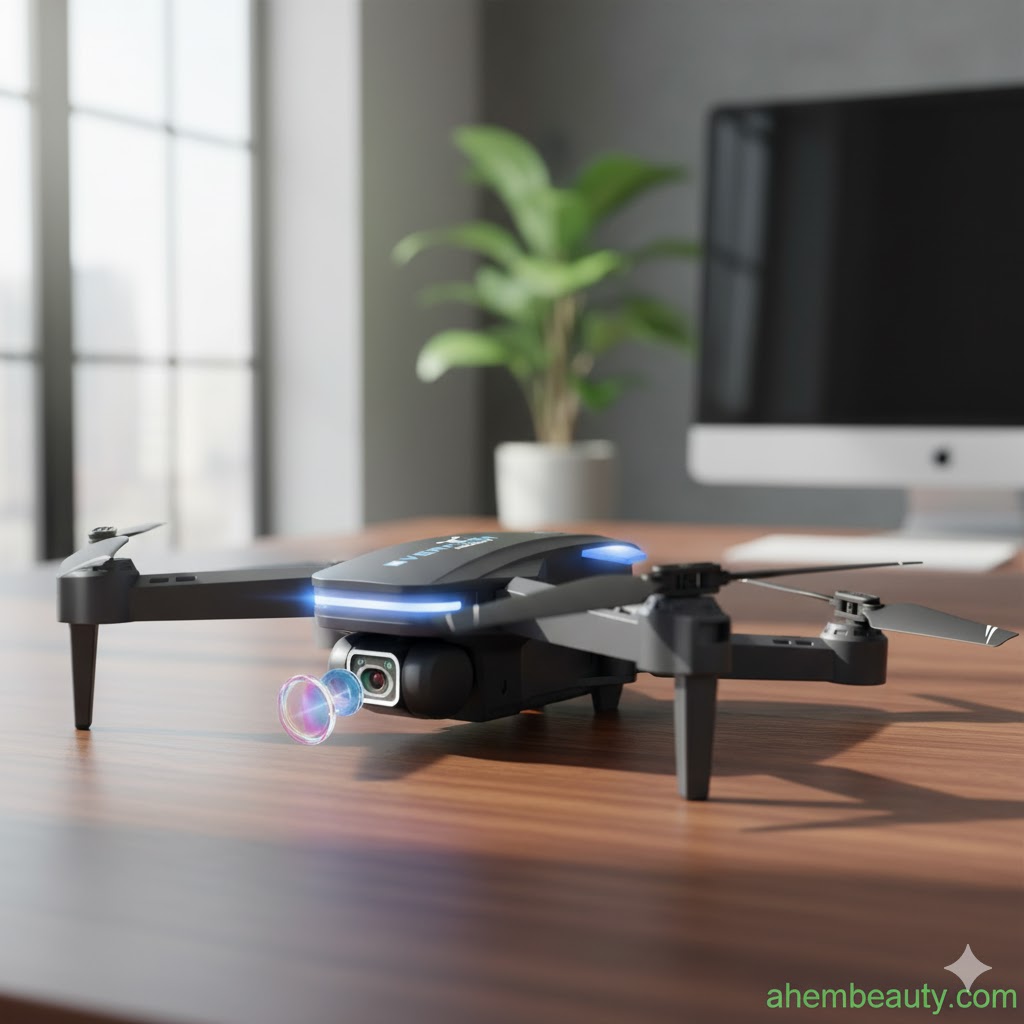
Market pulse — Entry-level buyers want a low price, real 1080p video, simple controls, and at least two batteries. RADCLO’s foldable mini checks those boxes—giving first-time pilots a safer, cheaper path into camera drones.
As drones evolve, not every buyer is ready to jump straight into high-end models like the Mavic Air. Many beginners want something more affordable yet still capable of capturing solid footage. That’s where the RADCLO Mini Drone comes in. Frequently listed among the best drones with camera in the budget category, it has been gaining attention in consumer reports for offering foldable portability, gesture controls, and multiple batteries — features once limited to pricier models.
The RADCLO Mini Drone weighs far less than professional models, and its foldable design means it can easily fit into a small travel bag. Buyers report that this portability makes it a great first drone for vacations, outdoor gatherings, or even backyard practice. Despite its lightweight build, reviewers highlight that the arms feel sturdy when locked in place, giving beginners confidence in handling.
The highlight here is the onboard HD camera, which records at 1080p resolution. While it doesn’t match the 4K quality of DJI’s higher-end drones, it’s more than enough for casual social media use. For many beginners, it’s the first taste of aerial filming, producing clear enough shots to impress friends and family. Industry testers say this makes it a smart stepping stone toward the best drones for videography, especially for learners who want to practice framing and movement without worrying about damaging expensive gear.
Gesture controls add a fun twist — with simple hand signs, users can trigger photo and video capture. For beginners and younger pilots, this feature makes flying feel less technical and more interactive.
Equipped with altitude hold and headless mode, the RADCLO Mini Drone is designed to reduce confusion for first-time users. One-tap takeoff and landing keep things simple, while the built-in stabilization ensures smoother hovering. Still, this is not a drone built to fight windy conditions — reviewers agree it performs best indoors or in very calm outdoor environments.
One major selling point of the RADCLO Mini Drone is its inclusion of two batteries, giving a total flight time of around 22–24 minutes (11–12 minutes per battery). For the price point, that’s considered impressive. While its flight sessions are naturally shorter than premium drones, buyers mention that the quick charging time helps make up for the limitation. For families introducing kids or teens to drone flying, this double-battery setup adds welcome flexibility.
The drone includes propeller guards, an emergency stop function, and real-time FPV transmission through a smartphone app. These features help new users feel more secure, reducing the risk of accidents during those first practice flights. The “one key return” function is also handy — though less precise than DJI’s GPS-based RTH, it gives beginners a backup option if they lose orientation.
| Pros | Cons |
|---|---|
| Lightweight and foldable, easy to carry | Not suitable for windy outdoor conditions |
| 1080p HD camera with gesture controls | Lacks 4K resolution and advanced stabilization |
| Two batteries included (up to 24 minutes total flight time) | Shorter flight sessions than higher-end drones |
| Beginner-friendly features: altitude hold, headless mode, one-tap landing | Limited obstacle avoidance features |
| Affordable entry point compared to premium drones |
The RADCLO Mini Drone may not compete with DJI’s premium lineup, but it fills an important role: giving beginners an affordable, reliable way to experience aerial photography and videography. Its foldable design, simple controls, and included extras make it a strong entry-level choice for casual pilots. For anyone testing the waters before investing in professional equipment, this drone delivers real value and an enjoyable flying experience. It’s proof that even at a lower price point, you can find one of the best drones with camera for practice — and a practical stepping stone toward the best drones for videography.
5. Holy Stone HS110D FPV Drone: (Trusted Pick for First-Time Flyers)

Market pulse — First-time buyers graduating from toy minis want sturdier frames, true 1080p FPV, and modular dual batteries—without crossing into pro pricing. HS110D delivers that blend, which is why it keeps trending in beginner shortlists.
After trying compact entry-level drones like the RADCLO Mini, many beginners look for something with a bit more stability, better camera quality, and longer flight range — without breaking the bank. The Holy Stone HS110D often comes up in such conversations, with thousands of positive reviews and consistent visibility among the Amazon best drones list. For first-time flyers who want reliability and solid video features, it’s often recommended as a strong choice to begin with.
Made from lightweight ABS plastic, the HS110D is tough enough to survive small crashes and the occasional rough landing. At under 150 g, it avoids the complexity of heavy registration requirements in many regions. Reviewers note that its size strikes a balance — large enough to feel stable outdoors, yet light enough for safe indoor flights. Foldable propeller guards also add an extra layer of protection, making it family- and kid-friendly.
Equipped with a 1080p HD Wi-Fi camera and a 120° wide-angle lens, the HS110D produces clear, shareable footage. While it won’t replace a professional drone’s 4K output, it delivers strong performance for casual shooting, vlogs, and social media clips. The live FPV feed streams directly to a smartphone, giving beginners the thrill of real-time aerial viewing. Buyers frequently comment that this drone gave them their first taste of immersive flying, making it a gateway toward more advanced aerial videography.
The HS110D includes several flight-assist features tailored for newcomers. Altitude hold keeps the drone hovering at a steady height, while headless mode ensures that controls remain intuitive regardless of orientation. One-key takeoff and landing make it nearly foolproof to launch and recover. Tech reviewers highlight that these features allow beginners to focus on directional movement and camera framing instead of worrying about stabilization.
The drone isn’t built for windy conditions, but it performs with solid stability when flown in calm outdoor areas. The 6-axis gyro stabilization ensures smooth flight paths, and the drone responds well to joystick input. For first-time pilots, this mix of safety and control reduces the learning curve significantly.
The HS110D comes with two modular batteries, each lasting around 10 minutes per charge. That adds up to about 20 minutes of flying time, which is standard for its price category. Buyers note that modular batteries are convenient and safer to swap than older designs, and quick charging means you can get back in the air without waiting too long. For practice flights, this setup is more than adequate.
Built-in propeller guards, emergency stop, and low-battery alerts keep flights safe. The drone also supports gesture control — allowing users to snap photos or start recording with simple hand signs. Another standout feature is “trajectory flight,” where pilots can draw a path in the app, and the drone follows it automatically. For learners, these features feel both fun and educational.
| Pros | Cons |
|---|---|
| Lightweight yet sturdy build with propeller guards | Not suitable for windy conditions |
| 1080p HD wide-angle camera with live FPV feed | Shorter battery life than premium drones |
| Beginner-friendly features: altitude hold, headless mode, one-key takeoff/landing | Camera resolution limited compared to 2K/4K competitors |
| Two modular batteries (≈20 minutes total flight time) | No GPS or advanced obstacle avoidance |
| Gesture control and trajectory flight add creative options | |
| Affordable and highly rated on Amazon |
The Holy Stone HS110D is a proven entry-level drone that blends affordability, durability, and simple controls. Its camera and FPV features introduce newcomers to the excitement of aerial recording without overwhelming them with complexity. While it can’t match the advanced specs of high-end models, it succeeds in its mission: giving first-time pilots a reliable, enjoyable start. Backed by thousands of strong customer reviews and consistent placement among the Amazon best drones, it remains a go-to choice for anyone seeking one of the best drones beginners can trust for their very first flights.
6. Potensic ATOM SE GPS Drone: (4K Power in a Budget-Friendly Package)
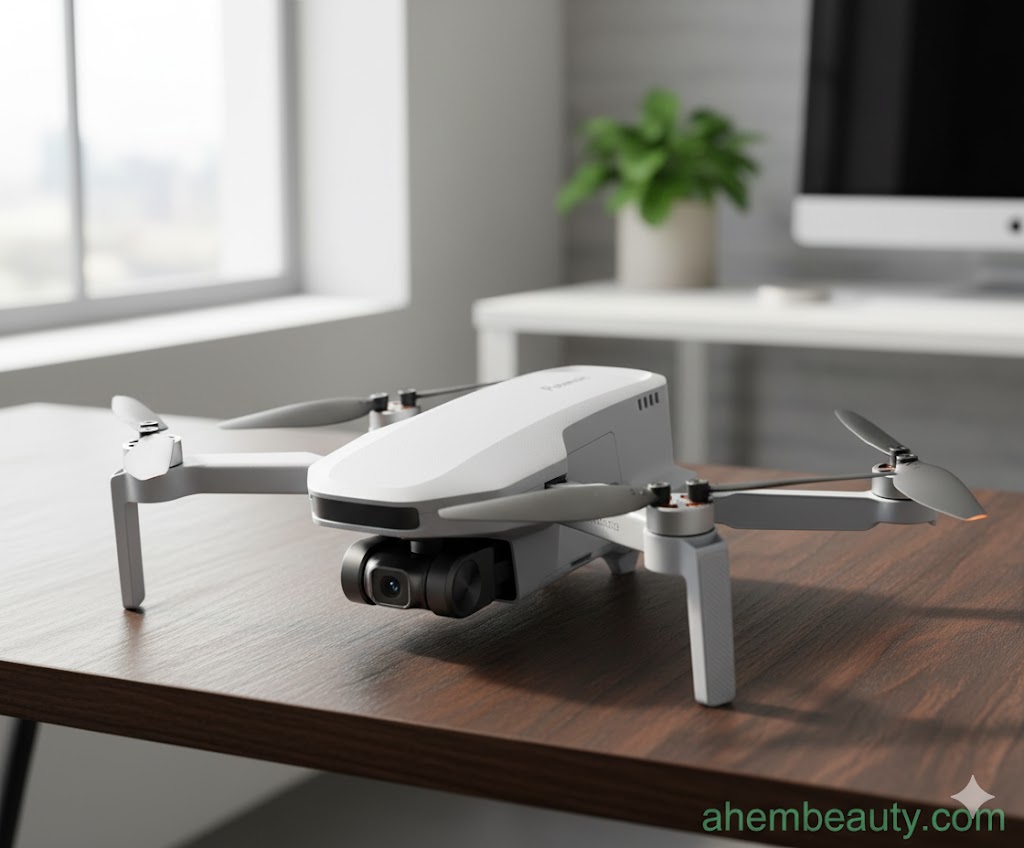
Market pulse — Creators graduating from toy minis want true 4K, GPS stability, L5 wind resistance, and 30+ minute batteries—without DJI pricing. ATOM SE hits that value sweet spot, which is why it keeps popping up in budget 4K shortlists.
As drone enthusiasts move beyond starter models, the demand for sharper video, GPS-assisted stability, and longer battery life grows quickly. For many buyers, DJI’s lineup feels out of reach, but that doesn’t mean professional-level imaging is off the table. The Potensic ATOM SE has been highlighted in tech roundups as the best budget drone with 4k camera, giving creators access to cinematic-quality footage without the four-figure price tag.
Weighing under 249 g, the ATOM SE avoids FAA registration requirements for recreational pilots in the U.S., making it easy to travel with. Its foldable design makes it backpack-friendly, while the aerodynamic frame improves stability during flight. Reviewers point out that the drone feels sturdier than most entry-level competitors, striking a good balance between portability and durability. For photographers who want a lightweight companion, this compact design is a strong selling point.
The standout feature of the ATOM SE is its 4K video recording capability at 30fps, supported by a 1/3-inch Sony CMOS sensor. It also captures 12 MP stills with enhanced detail. While it doesn’t offer a 3-axis gimbal like premium DJI drones, it uses advanced EIS (Electronic Image Stabilization) to smooth out footage. Buyers report that the results are surprisingly cinematic for the price range, especially in well-lit outdoor conditions.
For hobbyists, travel vloggers, and first-time content creators, this drone offers a level of sharpness and clarity that rivals more expensive models. Some tech reviewers even describe it as a stepping stone toward the best drone for professional photography, since it introduces users to higher-end features without overwhelming them with cost or complexity.
Unlike many budget drones, the ATOM SE integrates GPS and GLONASS positioning, giving it a reliable Return-to-Home function and more accurate hovering. The Level 5 wind resistance rating allows it to remain stable in breezes up to 38 kph, something cheaper toy drones can’t handle. Testers highlight that GPS tracking makes flights smoother and less stressful, especially for beginners learning long-distance control.
The ATOM SE also offers multiple intelligent flight modes such as Follow Me, Circle, and Waypoints. These modes give pilots the ability to capture cinematic shots with minimal manual control — features typically reserved for higher-end drones.
Each battery provides up to 31 minutes of flight, with combo bundles extending total flying time well past an hour. The 4 km HD video transmission range also adds to its appeal, giving creators more freedom to experiment with perspective and distance. Buyers consistently praise the extended airtime, saying it allows for more creative exploration compared to typical budget drones.
Safety features include automatic Return-to-Home on low battery or lost signal, one-key takeoff/landing, and GPS-based stabilization. These build confidence for new pilots while still offering room to grow for intermediate users. The dedicated PotensicPro app also provides tutorials, flight logs, and firmware updates, ensuring a smoother learning curve.
| Pros | Cons |
|---|---|
| Lightweight (under 249 g, registration-free in many regions) | Lacks mechanical 3-axis gimbal (uses EIS instead) |
| 4K video at 30fps with Sony CMOS sensor | Low-light performance not as strong as premium drones |
| GPS + GLONASS positioning with Return-to-Home | App setup can feel overwhelming for first-time users |
| Strong Level 5 wind resistance | |
| Up to 31 minutes flight per battery | |
| Intelligent flight modes: Follow Me, Circle, Waypoints | |
| Excellent value in its price range |
The Potensic ATOM SE pushes the boundaries of what a budget-friendly drone can deliver. With 4K video, GPS stability, and extended flight times, it stands out in a crowded market. While it doesn’t fully replace high-end rigs, it gives first-time content creators and hobbyists a real taste of professional aerial photography. For travelers, vloggers, and learners seeking one of the best budget drone with 4k camera options, the ATOM SE makes an excellent investment — and a practical step toward mastering the tools used in the best drone for professional photography category.
7. HASAKEE Q11 Foldable Drone: (A Friendly Finish for First-Time Flyers)

Market pulse — For true first flights, families prioritize low cost, easy controls, dual batteries, and prop guards. Q11 checks those boxes—making it a popular “trainer” pick before stepping up to GPS models.
After exploring advanced features in models like the Potensic ATOM SE, many newcomers still want something simple, affordable, and confidence-boosting for their very first flight. That’s where the HASAKEE Q11 Foldable Drone comes into play. Highlighted by parents, hobbyists, and educators, it consistently appears in lists of the best drones for beginners, offering a reliable training ground before moving on to higher-end models.
The Q11 is lightweight and portable, designed with foldable arms that make storage and travel easy. Its plastic shell feels sturdy enough to withstand light crashes — a critical feature for learners still practicing takeoff and landing. Buyers note that while it doesn’t have the polished finish of premium drones, the bright LED lights and compact build make it inviting for kids, teens, and adults testing their skills for the first time.
Equipped with a 1080p HD camera, the Q11 provides basic but clear footage suitable for social media sharing. It won’t compete with 4K drones, but that’s not the goal here — the emphasis is on giving beginners an accessible way to experiment with aerial views. The Wi-Fi FPV feed streams directly to a smartphone, allowing users to see real-time footage as they fly. For many, this is their first taste of what drone videography can look like.
The Q11 is built around ease of use. Features like one-key takeoff and landing, altitude hold, and headless mode ensure that first flights are less intimidating. These functions let learners focus on basic navigation without worrying about orientation or sudden drops. Tech reviewers often note that its stable hover and responsive joystick control make it a good “trainer” drone, bridging the gap between toy-like quadcopters and more advanced GPS drones.
While it’s not suited for strong winds or long-distance exploration, the Q11 performs well in backyards, parks, and indoor environments. Its speed modes also allow gradual skill-building — starting slow for kids and ramping up for teens and adults.
The HASAKEE Q11 comes with two rechargeable batteries, each delivering about 12 minutes of flight time. That means users can expect around 24 minutes of practice per session before recharging. The flight range is about 100 meters, enough for safe experimentation without risking the drone flying out of sight. Buyers frequently praise the inclusion of an extra battery, which extends fun without long recharging breaks.
Propeller guards, emergency stop, and low-battery warnings all come standard. These protections matter when learning, as they minimize the risk of accidents. The drone also features gesture control for snapping photos and basic trajectory flight, where users can draw a path in the app and watch the drone follow it. Parents in particular highlight these extras as confidence boosters for younger fliers.
| Pros | Cons |
|---|---|
| Affordable and accessible for beginners | Limited to calm-weather flying |
| 1080p HD camera with live FPV feed | 1080p camera is basic compared to 2K/4K models |
| One-key takeoff/landing, altitude hold, and headless mode | Shorter range (≈100 m) than advanced drones |
| Two rechargeable batteries, ≈24 minutes of combined flight time | No GPS or advanced stabilization |
| Lightweight, foldable, and portable | |
| Safety features: propeller guards, emergency stop, low-battery alert |
The HASAKEE Q11 may not aim for cinematic production, but that’s precisely why it works so well as a first drone. Its balance of safety, simplicity, and affordability makes it a confidence-building entry point for kids, teens, and adults alike. It introduces key flight skills without overwhelming users with complexity. For those searching for the best drones for beginners, the Q11 earns its place as a best starter drone that prepares new pilots for bigger adventures in aerial photography and videography.
The seven picks above cover every first-flight path
From sub-249 g minis with GPS and 4K options to ultra-affordable “trainer” models with prop guards and one-tap controls, these seven drones offer a complete on-ramp for new pilots. Use this quick guide to choose based on what matters most:
- Safest first steps: Look for altitude hold, headless mode, prop guards, and one-key takeoff/landing.
- Best for social video: Prioritize stabilized cameras (gimbal or reliable EIS) and simple QuickShot-style modes.
- Wind & range practice: GPS lock, Return-to-Home, and Level 5 wind handling reduce drift and stress.
- Time to learn: Dual- or triple-battery bundles stretch practice sessions without constant charging.
- Travel friendly: Sub-249 g, foldable arms, and compact cases keep gear light and registration-simple in many regions.
Pro tip: Start in an open field, keep visual line of sight, and update firmware in the app before your first flight. As skills grow, step up from “trainer” drones to GPS models with better cameras—your footage and confidence will improve together.
📊 Comparison Table: Best Drones for Beginners in 2025
| Drone Model | Camera Quality | Flight Time (per battery) | Key Features | Best For | Verdict (News-Style) |
|---|---|---|---|---|---|
| DJI Mini 4K | 4K UHD + 3-axis gimbal | 31 minutes | Sub-249g (no FAA reg.), Level 5 wind resistance, QuickShots | Beginners wanting cinematic footage | Considered one of the best drones for beginners — industry reviewers call it the “cinema starter kit.” |
| DJI Mini 3 | 4K HDR + vertical mode | 31 minutes | Sub-249g, social-media-ready vertical shooting, strong wind stability | Travelers & vloggers | Tech analysts say it balances simplicity + pro features, making it a smart upgrade path. |
| DJI Mavic Air | 4K 100 Mbps + HDR | 21 minutes | Compact but durable, obstacle avoidance, advanced camera controls | Hobbyists moving up | Viewed as a bridge between entry-level and pro, still respected by photography reviewers. |
| RADCLO Mini Drone | 1080p HD | 11–12 minutes | Foldable, gesture controls, two batteries included | Kids, families, and casual flyers | Reported by buyers as a budget-friendly trainer, great for fun and learning. |
| Holy Stone HS110D | 1080p HD wide-angle | 10 minutes | FPV Wi-Fi feed, altitude hold, headless mode, trajectory flight | First-time flyers | Highly rated on Amazon — seen as a confidence-builder for total beginners. |
| Potensic ATOM SE | 4K 30fps (Sony CMOS) | 31 minutes | GPS + GLONASS, Level 5 wind resistance, 4 km range | Content creators, travelers | Highlighted as the best budget drone with 4K camera, praised for GPS stability. |
| HASAKEE Q11 | 1080p HD | 12 minutes | One-key takeoff/landing, headless mode, LED lights | Kids & training pilots | Considered a best starter drone — simple, safe, and affordable for first practice flights. |
With so many drones competing for attention, new pilots often struggle to decide which model truly fits their needs. This side-by-side comparison helps cut through the noise. By weighing camera quality, flight time, and usability, readers can see where each drone fits— from accessible trainers like the HASAKEE Q11 to semi-pro tools like the DJI Mini 4K and Potensic ATOM SE.
Experts often stress there’s no single “perfect” choice—the right drone depends on whether you’re chasing cinematic 4K shots, simple backyard practice, or a stepping stone toward pro photography.
Our Popular Articles
📰 Editorial Analysis: Trends in Beginner Drones (2025)
In 2025, beginner-friendly drones are no longer the clunky gadgets of the past — they’ve become smarter, lighter, and far more accessible. Once considered expensive tools for professionals, drones are now entering the mainstream, with families, hobbyists, and even young students flying them as casually as they would a remote-control car.
One of the biggest shifts is in weight and design. Nearly every major brand now offers sub-249 g models — a category that avoids FAA registration requirements for recreational use in the U.S. This regulatory sweet spot has fueled explosive growth, making drones like the DJI Mini 4K and Potensic ATOM SE attractive to newcomers who want to skip paperwork but still capture professional-looking footage. Tech analysts note that “the under-250g class has become the gateway for first-time flyers.”
At the same time, ease of use is driving adoption. Features such as one-tap takeoff, altitude hold, GPS-assisted hovering, and automatic Return-to-Home (RTH) have reduced the learning curve dramatically. What once took weeks of practice can now be mastered in a few short flights. Reviewers consistently point out that these safeguards give beginners the confidence to experiment without fear of instant crashes.
Affordability has also reshaped the landscape. Entry-level drones with 1080p cameras and simple stabilization can now be found for under $100, while mid-tier models offering 4K video, GPS, and 30-minute flight times are available at a fraction of what professional rigs once cost. As a result, new pilots no longer feel locked out by price — they can start small and upgrade as their skills grow.
In short, the beginner drone market in 2025 is defined by three forces: lighter weight, smarter controls, and lower barriers to entry. Together, these trends make it easier than ever for first-time pilots to take to the skies — whether their goal is capturing vacation videos, practicing backyard flights, or stepping toward professional aerial photography.
🔍 How to Choose the Right Starter Drone
In 2025, beginner-friendly drones are no longer the clunky gadgets of the past — they’ve become smarter, lighter, and far more accessible. Once considered expensive tools for professionals, drones are now entering the mainstream, with families, hobbyists, and even young students flying them as casually as they would a remote-control car.
If your main goal is casual family photos or short clips, a 1080p HD camera may be enough. But for travelers, vloggers, and creators, 4K resolution has quickly become the standard. It delivers sharper detail and smoother editing options. Many of the best drones for beginners now come with at least a stabilized 2K or 4K option, even under $500.
How long a drone can stay in the air per charge makes a big difference. Entry-level models usually give 10–12 minutes, while advanced starter drones stretch up to 25–31 minutes. Combo packs with spare batteries are the best way to keep practicing without long waits between flights.
Lightweight drones often struggle in outdoor conditions. Look for models with at least Level 5 wind resistance if you plan to fly outside. GPS-assisted hovering also makes a huge difference, allowing drones to stay steady without constant joystick correction. This feature is now common in what many reviewers call the best starter drone category.
For first-time pilots, built-in safeguards are critical. Propeller guards prevent blade damage, altitude hold helps maintain steady height, and an emergency stop lets you cut power instantly if something goes wrong. Higher-end beginner models also add Return-to-Home (RTH) and low-battery alerts for extra peace of mind.
Look for drones with one-key takeoff and landing, headless mode, and app-based tutorials. These cut down the learning curve dramatically. As one tech journalist noted, “a good drone for beginners should teach as much as it entertains.”
Choosing the right drone is less about finding the most expensive model and more about selecting the one that fits your lifestyle. If you want cinematic travel footage, lean toward GPS-equipped 4K drones. If you just want to learn the basics safely, a durable 1080p trainer with guards is the smarter investment. Either way, the current market ensures there’s a reliable option for every beginner.
💡 Expert Tips for First-Time Pilots
Flying your first drone can feel exciting and intimidating at the same time. Industry reviewers and experienced pilots agree that success depends less on specs and more on preparation. Here are some of the most valuable insights experts highlight for newcomers:
Choose an open field, a quiet park, or even a large indoor gym if your drone has propeller guards. Avoid crowded areas, tall trees, or power lines during your first flights. Doing this minimizes accidents and helps you gain confidence step by step.
Even if your drone advertises up to 30 minutes of airtime, early practice should be limited to quick 5–10 minute sessions. Keeping sessions brief allows you to track progress clearly and avoid being overwhelmed.
Practice hovering, smooth turns, and controlled landings before trying complex maneuvers. Pilots often say that “mastering the hover” is the first real milestone for beginners.
Performing a compass and gyro calibration before every session helps ensure steady flight and reduces the likelihood of mid-air issues. Most apps provide prompts for this process, and experts strongly advise never skipping it.
Features like altitude hold, headless mode, and one-key takeoff exist to simplify the early learning curve. Keeping these active until you’re confident helps you focus on core navigation skills.
Some drones, like DJI’s Mini series, require apps that may not always be listed in the Play Store. Download only from official manufacturer websites to avoid outdated or unsafe versions.
In the U.S., drones under 249 g typically don’t require FAA registration, but rules differ worldwide. Experts stress checking your country’s laws before flying — even recreationally.
The best first flights aren’t about distance or daring stunts. They’re about building steady habits that make flying second nature. Experts note that beginners who follow these basics are far less likely to damage their drones and far more likely to enjoy the experience.
📌 Frequently Asked Questions About Beginner Drones
In the U.S., drones that weigh under 249 g (like the DJI Mini series and Potensic ATOM SE) typically do not require FAA registration for recreational use. However, if you plan to use your drone for commercial purposes — even if it’s lightweight — registration and a Part 107 certification are required. Always check local laws, as regulations differ worldwide.
Most beginner drones last between 10–15 minutes per battery, while mid-tier starter drones now reach 25–31 minutes. Buyers often choose bundle packs that include multiple batteries to extend practice sessions without long charging breaks.
Toy drones are usually smaller, lighter, and very cheap — great for kids but limited in stability and camera quality. Starter drones, on the other hand, are designed for training adults and teens, often featuring HD or 4K cameras, GPS assistance, and safer controls like altitude hold and one-key landing.
Toy-level cheap drones aren’t ideal for serious photos. They can be fun for learning, but their cameras usually max out at 720p or shaky 1080p. If you want shareable photos or videos, experts recommend at least a 1080p stabilized camera, with 4K drones being the best balance between affordability and quality.
Not strictly — but GPS adds huge value. It helps the drone hover more steadily, enables Return-to-Home (RTH), and allows smart flight modes like Follow Me or Waypoints. For complete beginners, non-GPS drones are fine for indoor or backyard practice. But for outdoor flying and reliable stability, GPS drones are the safer bet.
✅ Why You Can Trust Our Reports and Reviews
Editorial note: We review products independently. If we update a recommendation or correct an error, we note the change in our article history.
🔔 Affiliate Disclosure
As an Amazon Associate, AhemBeauty.com earns from qualifying purchases.
AhemBeauty.com also participates in various affiliate marketing programs, including the Amazon Services LLC Associates Program. This means we may earn a small commission if you purchase products through links on our site — at no extra cost to you.
Our recommendations are based on careful research, hands-on testing, and our genuine belief in the products we feature. These commissions help support the site and allow us to continue delivering honest, reader-focused content.
Note: Prices and availability are subject to change after the time of publication. All affiliate links are clearly marked and use standard tracking parameters.

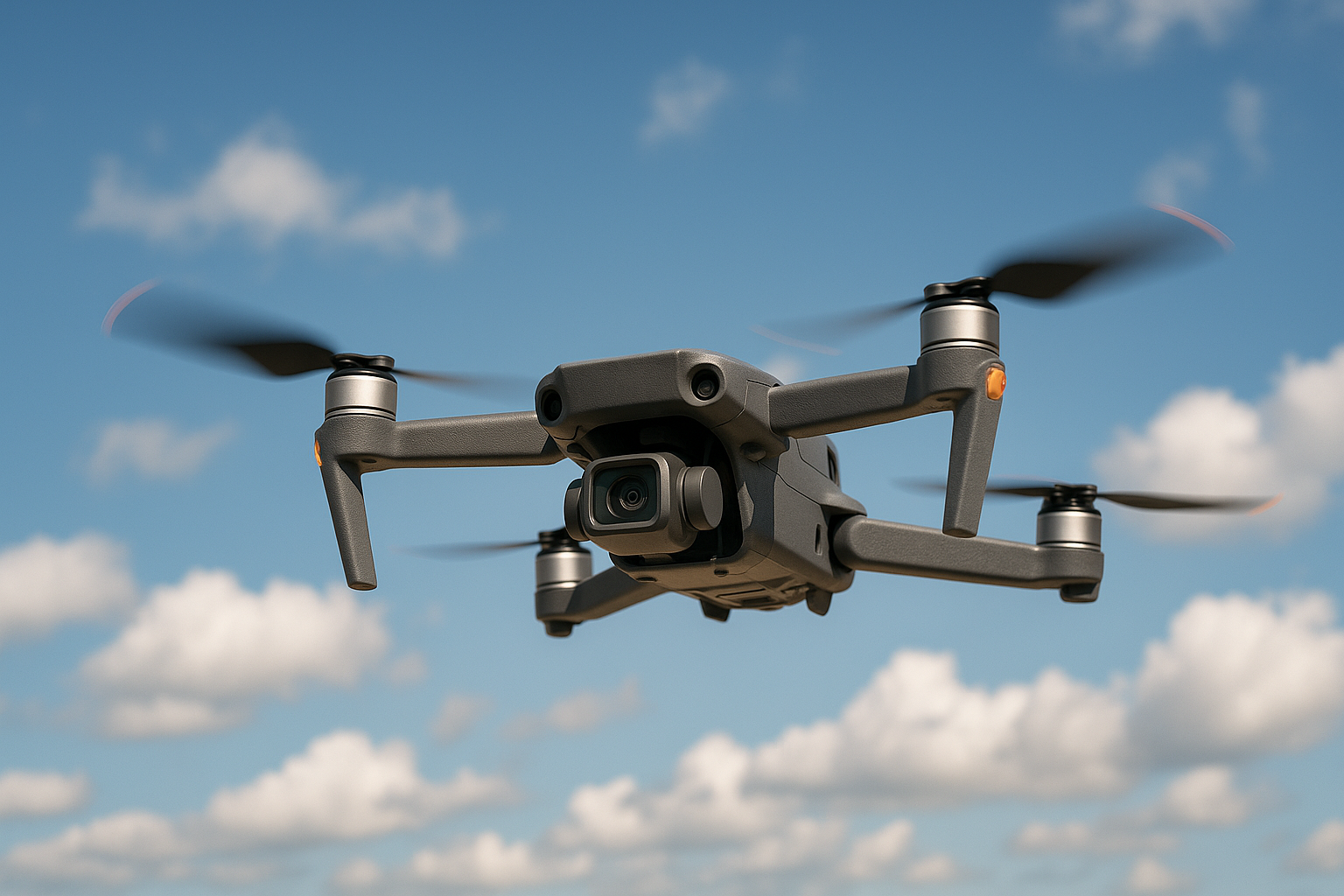
 By
By ![Top 5 Best Over-Ear Headphones for Working Out of 2025 [Tested & Reviewed]](https://www.ahembeauty.com/wp-content/uploads/2025/07/Add-a-heading-768x432.jpg)

